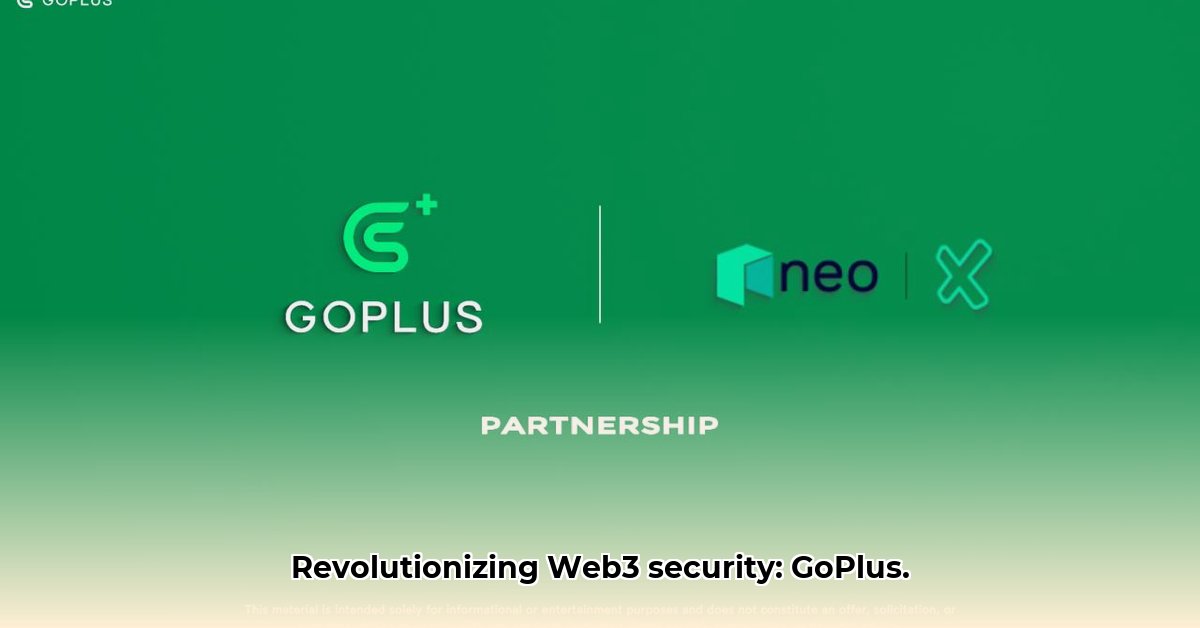
GoPlus aims to revolutionize Web3 security with its User-Controlled Security Network (USN), a decentralized system promising end-to-end protection of digital assets. This technical review assesses GoPlus's architecture, security claims, and potential vulnerabilities, offering actionable intelligence for developers, users, auditors, and regulators.
Decoding GoPlus: A Technical Assessment
GoPlus's core innovation lies in its decentralized USN. This architecture, however, presents both opportunities and significant challenges. The system's effectiveness hinges on the interplay of several key components: the open security data layer, the User Security Module (USM), and the underlying computational resources. Currently, detailed specifications regarding the implementation of these components are limited, hindering a complete security analysis. The lack of transparency around data storage, access protocols, and specific technologies employed leaves critical questions unanswered. For example, how does GoPlus ensure data integrity within its decentralized architecture? What mechanisms are in place to prevent manipulation or unauthorized access to the open security data layer?
The USM's interaction with various blockchains is another crucial area needing clarification. While seamless integration is claimed, the precise mechanics and potential vulnerabilities arising from interoperability remain unclear. Further, the absence of performance data, penetration testing results, and evidence of resilience against attacks limits our ability to confidently assess GoPlus's security claims. A comprehensive technical white paper detailing these aspects is urgently needed.
Evaluating the Risks: A Risk Assessment Matrix
The following matrix summarizes potential risks associated with GoPlus's architecture and operation:
| Technology Component | Risk Level | Potential Problems | Mitigation Strategies |
|---|---|---|---|
| Decentralized USN Architecture | Moderate | Complexity hampers thorough security audits and introduces vulnerabilities related to governance and consensus mechanisms. | Independent security audits, transparent governance models, robust consensus protocols, regular security updates. |
| USM Integration | Moderate | Incompatibility or vulnerabilities in the integration with various blockchains. | Rigorous interoperability testing, detailed documentation, clear API specifications, fallback mechanisms for blockchain failures. |
| Open Data & Compute Layers | High | Potential for data breaches, unauthorized access, and data manipulation. | Robust data encryption, access control mechanisms, regular security audits, continuous monitoring, and intrusion detection systems. |
| Permissionless Access | High | Vulnerability to malicious actors exploiting the open nature of the system. | Advanced threat detection, intrusion prevention systems, community-based monitoring, rapid response mechanisms to security incidents. |
Actionable Intelligence: Guidance for Stakeholders
Based on the identified risks, the following recommendations are offered to various stakeholders:
1. GoPlus Developers:
- Publish a comprehensive technical white paper detailing the architecture, security protocols, and implementation specifics of the USN and USM.
- Commission independent security audits from reputable firms with experience in decentralized systems. Transparency in reporting these audit findings is crucial.
- Demonstrate the system's functionality and security through public testnet deployments.
- Foster an active and engaged community to help identify and address emerging vulnerabilities.
- Implement continuous integration and continuous delivery (CI/CD) processes to rapidly iterate on security improvements.
2. Web3 Users:
- Exercise caution before using GoPlus for high-value transactions.
- Verify the authenticity and integrity of any GoPlus-related software or services.
- Monitor community forums and news sources for updates regarding security issues or vulnerabilities.
- Avoid sharing sensitive information unless absolutely necessary.
3. Security Auditors:
- Apply specialized methodologies for auditing decentralized systems, including rigorous penetration testing and code analysis.
- Focus on the critical components of the system, particularly data integrity, access controls, and dispute resolution mechanisms.
- Publish comprehensive assessment reports openly, facilitating community scrutiny and improvement.
4. Regulators:
- Develop clear regulatory frameworks adapted to the unique challenges of decentralized systems, establishing guidelines for data privacy and security in the Web3 space.
- Engage with GoPlus developers to ensure compliance with relevant laws and regulations.
- Foster collaboration between regulatory bodies and the Web3 community to navigate the evolving regulatory needs.
Navigating the Regulatory Maze: Compliance and Decentralization
The decentralized nature of GoPlus presents unique legal challenges. Balancing the openness of the system with regulations concerning data privacy (GDPR, CCPA), anti-money laundering (AML), and know-your-customer (KYC) requirements will be crucial for its long-term viability. International regulatory disparities further complicate compliance, necessitating a nuanced approach that considers jurisdictional variations. The lack of a central point of control introduces complexities for enforcement, requiring a collaborative effort between regulators, developers, and the community to establish clear guidelines and accountability.
Conclusion: Potential and Limitations
GoPlus presents an innovative approach to Web3 security, but its success hinges on several factors. Addressing the identified risks and fostering transparency are paramount. The absence of detailed technical specifications and independent verification currently hinders a complete assessment. Addressing these gaps is essential for establishing trust and ensuring the long-term security and adoption of the GoPlus ecosystem. The successful navigation of the complex regulatory landscape is also a crucial factor in determining its ultimate impact on the Web3 security landscape.